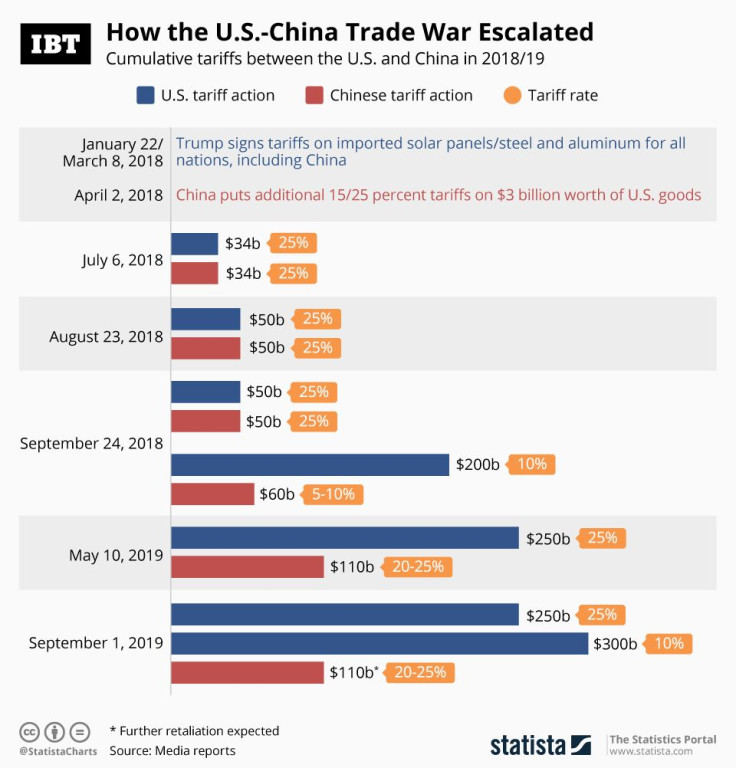Infographic: A Timeline On US-China Trade Tariffs So Far

The U.S. is continuing its trade war with China in 2019. On Thursday, President Trump announced via Twitter that his administration would be putting a 10 percent levy on the remainder of the US$300 billion worth of Chinese imports to the U.S. not affected by tariffs yet. Retaliatory measures from China are expected. While China has repeatedly hit the U.S. back with tariffs of their own, they haven't always matched those imposed by the U.S. in size.
In May, a tariff hike from 10 to 25 percent on US$200 billion worth of goods last took effect. After a truce and renewed talks between Beijing and Washington at the beginning of the year had brought about no resolution, the Trump administration followed through with its plan to hike up the tariffs. China also raised its tariffs, but they remained at a lower level.
The back-and-forth between the two nations began in early 2018 when President Trump announced tariffs on solar panels and later on steel and aluminum for all countries. China, a top player in the solar panel and steel industries, retaliated with tariffs on $3 billion worth of U.S. imports. Tariffs on fifty billion dollars worth of goods announced in June 2018 were periodically rolled out over the summer. After the first round of failed negotiations, the second round of tariffs hit in September 2018, then at the lower percentage rate of 10 percent in the case of the U.S. and 5-10 percent in case of China.











